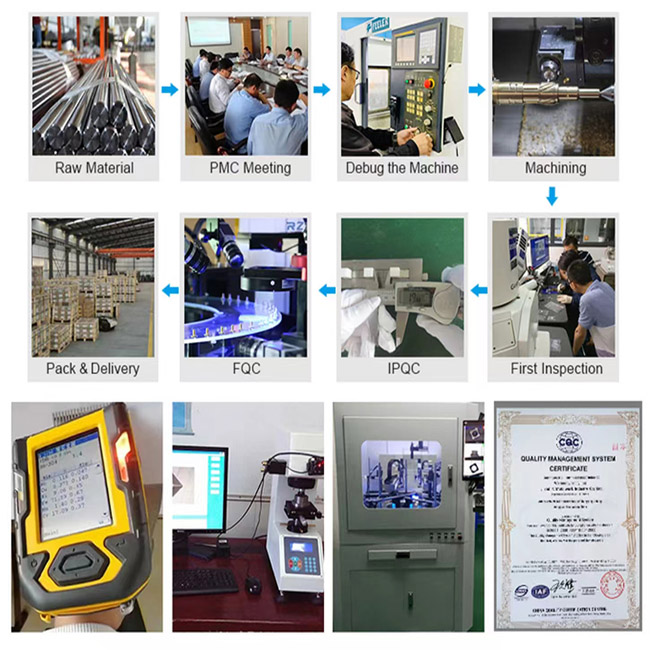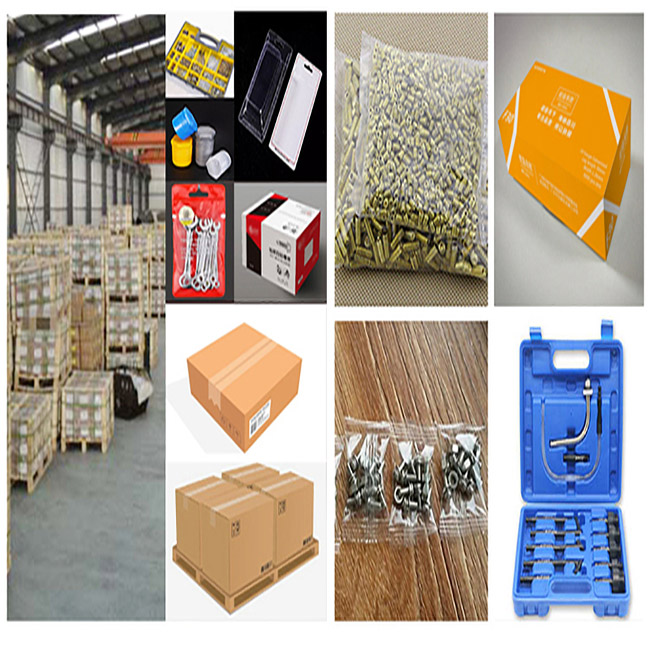M2.5 M5 ASTM B7 B7M Stainless Steel Male And Female Hexagon Head
Metal Standoff single studs

Product Description:
What is a standoff? As the name suggests, tstandoff is one end for
the internal thread and the other end for the external thread of a
kind of screws, broadly speaking, standoff also include both ends
are internal thread screws. Its appearance is hexagonal, play a
role in fastening and isolation, because it is generally used
hexagonal copper rod as raw material production and become, so
tstandoff is also known as copper column, hexagonal copper column,
copper isolation column or copper spacer column.
The use of standoff. Intercalated screws are mainly used in the
computer, circuit board and other industries, when one end is
screwed into the locked object, the hexagonal post is exposed to
the outside, which can fix or isolate other objects.
The main specifications of standoff are M3, M4, M5, M6, M8, M10,
etc., and their hexagonal posts were 5, 6, 8, 10, 12, 15mm, etc.,
which should be in the most or the M3 series. Material in addition
to copper an
Hexagonal studs are also known as yin and yang studs, it is one end
of the internal thread and one end of the external thread, but are
hexagonal, can play a role in fastening and isolation.
Mostly used in computers, circuit boards and other industries, when
used, when one end is screwed into the workpiece being fastened,
the hexagonal column is exposed on the surface, can be fixed or
isolated from other workpieces. Such as in the computer mainframe,
the external thread can be connected to the motherboard inside the
mainframe, the internal thread can be isolated from the motherboard
and sheet metal shell.
Applications:
Stainless Steel:
1, the basic knowledge of stainless steel
Stainless steel is an alloy material with corrosion resistance, and
its main components are an alloy of elements such as iron, chromium
and nickel. These elements can effectively resist oxidation and
corrosion, so that stainless steel has a high degree of durability
and aesthetics.
2, stainless steel maintenance methods
Cleaning
Keeping stainless steel products clean is an important part of
their maintenance. You can use mild detergents and soft cloth for
cleaning, avoid the use of detergents containing acidic and
alkaline components, so as not to damage the surface of stainless
steel. When removing dirt, you should try to avoid using irritating
cleaning tools to avoid scratching the stainless steel surface.
After cleaning, rinse with water and dry with a clean soft cloth.
3, the use of stain remover
For some stubborn dirt, you can use special stainless steel stain
remover for cleaning. But before using it, you should carefully
read and follow the instructions in the product manual. In
addition, stainless steel products on the dirt can be cleaned with
alcohol or vinegar, these common cleaners on stainless steel has a
certain decontamination effect.
Steel types:
| No. | C% | Cr% | Ni % | Mo % |
| 304 | 0.07 | 17.5-19.5 | 8.0-10.5 | / |
| 316 | 0.08 | 16.0-18.0 | 10.0-14.0 | 2.00-3.00 |
| 301 | 0.15 | 16.0-18.1 | 6-8 | / |
| 310 | 0.08 | 24-26 | 19-22 | / |
| 304L | 0.03 | 18-20 | 8-12 | / |
| 316L | 0.03 | 16-18 | 10-14 | 2-3 |
| 321 | 0.08 | 17-19 | 9-12 | / |
Stainless steel is renowned for its excellent resistance to
corrosion. This is primarily due to the presence of chromium in its
composition, which forms a thin, self-healing oxide layer on the
surface. This layer protects the steel from rust and other forms of
corrosion. This property makes stainless steel ideal for use in
harsh environments, such as marine applications, chemical
processing, and food processing industries, where exposure to
moisture, salt, or chemicals is common.
Stainless steel is incredibly strong and durable. It can withstand
significant mechanical stress and maintain its structural integrity
over long periods. Its high tensile strength and yield strength
make it suitable for applications that require robust materials. It
is commonly used in construction (e.g., structural beams,
reinforcement bars), automotive manufacturing (e.g., exhaust
systems, chassis components), and industrial machinery (e.g.,
gears, shafts).
Stainless steel has a sleek, shiny appearance that is both visually
appealing and easy to maintain. It can be polished to a mirror
finish or textured to achieve different looks. It is widely used in
consumer products (e.g., kitchen appliances, cutlery, sinks),
architectural elements (e.g., handrails, decorative panels), and
medical devices (e.g., surgical instruments) where appearance is
important.
Stainless steel is non-porous and easy to clean, making it highly
suitable for applications where hygiene is critical. Its smooth
surface resists the buildup of bacteria, mold, and other
contaminants. It is extensively used in the food and beverage
industry (e.g., food processing equipment, dairy machinery),
pharmaceutical industry (e.g., clean rooms, laboratory equipment),
and healthcare (e.g., hospital equipment, surgical tools) where
maintaining cleanliness is essential.
Stainless steel can withstand high temperatures without significant
degradation. It maintains its strength and stability even in
high-heat environments, making it suitable for applications
involving thermal processes. It is used in industrial furnaces,
heat exchangers, and automotive exhaust systems, where it can
resist oxidation and scaling at elevated temperatures.
About Us



Package






